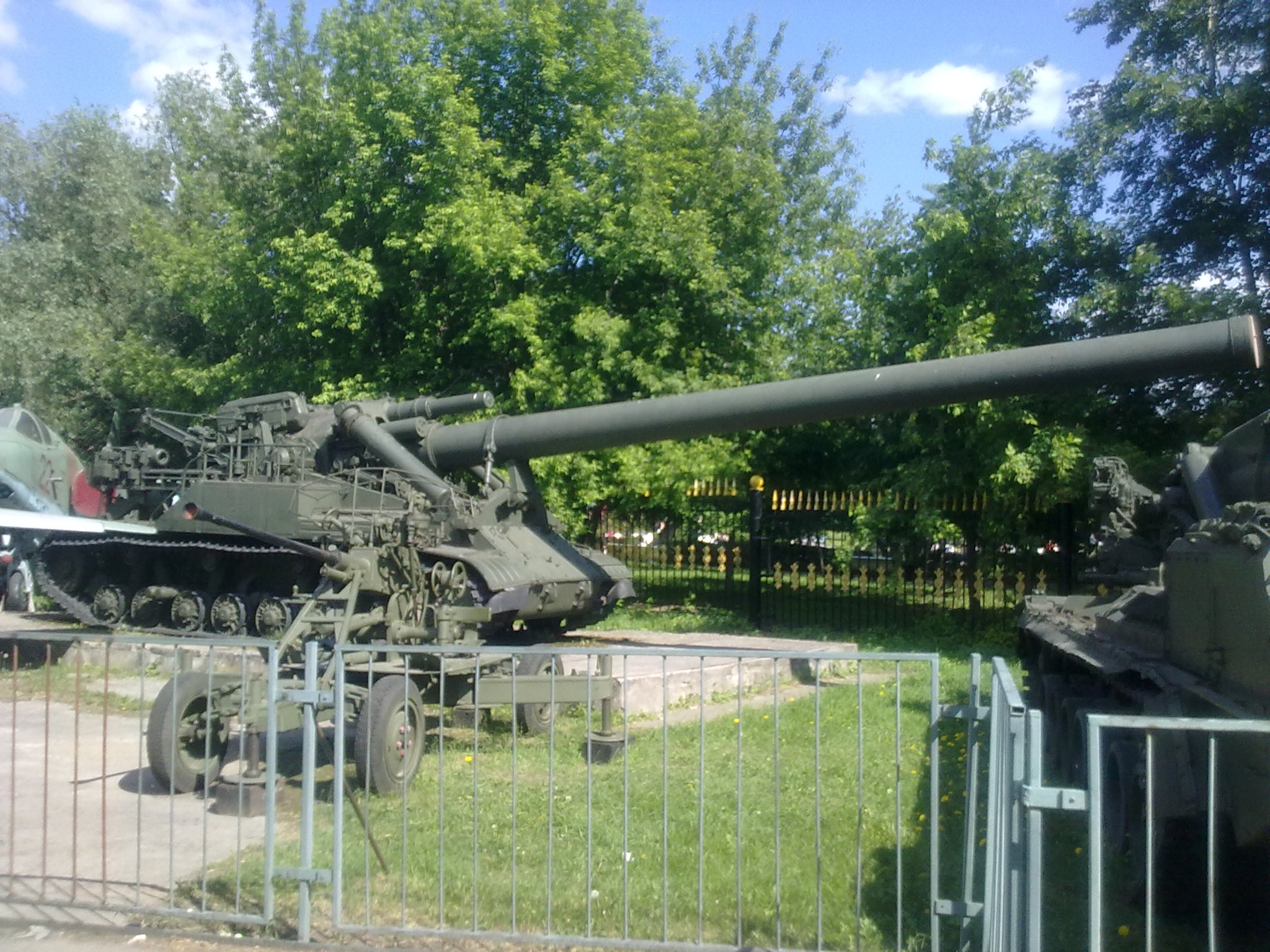2A3_Kondensator.jpg

Yesterday, I blogged about an old British Cold War idea for a nuclear land mine that was designed but never built. The Soviet Union also had some interesting designs for Cold War nuclear weapons. In the 1950s before the development of the “mutually assured destruction” doctrine, it was considered reasonable to talk about tactical nuclear weapons for battlefield use. The biggest nuclear artillery weapon constructed by the U.S.S.R. was called the 406mm Soviet 2A3 Kondensator.
In 1953, the U.S. had developed the 280mm M65 atomic cannon. The Soviets felt that they had to keep up with the U.S. with their own tactical field pieces. They designed the 406mm howitzer (2A3/Object 271) and 420mm mortar (2B1/Object 273). The first prototype for the 2A3 was built in late 1956.
The 2A3 was mounted on the chassis of a T-10 heavy Soviet tank with extra shock absorbers. The whole vehicle weighted sixty-five tons. During test firings, the recoil was so powerful that the 2A3 would be moved back several yards. Things often broke and had to be repaired.
The 2A3 was aimed by rotating the chassis. Fine adjustments could be made with an electric transverse mechanism. The massive vehicle had significant mobility challenges. It was unable to cross most bridges, could not move through city streets and was unable to travel under some power lines.
The huge caliber of these field pieces was needed because the Soviet engineers were not sure that they could make nuclear munitions that were any smaller. The final projectile weighted one thousand two hundred and fifty-six pounds.
The range of the 2A3 was about sixteen miles. This was relatively short compared to nuclear rockets or more advanced Soviet tactical nuclear field pieces. Only four 2A3 were ever produced and the obsolete field piece was replaced by new nuclear rockets in the Soviet arsenal. These newer field pieces were much more mobile and compact that the 2A3 and had a range of about forty-four miles.
It took so long to develop and test the 2A3 that the development of newer and better nuclear artillery pieces caught up and passed the development of the 2A3 before it even made it to prototype. In essence, it was already obsolete before it was even prototyped. This is certainly a lesson for nations engages in rapid development of new weapons to counter the weapons developed by perceived enemies.
For decades, the development of nuclear weapons has focused on the huge ICBMs, submarine launched nuclear tipped missiles and big atomic bombs delivered by nuclear bombers. Tactical nuclear weapons have been developed but never used because of fears of escalation to all out nuclear war that would be probable.
A few years ago, President Putin of Russia announced that if it ever came to a land war in Eastern Europe and conventional Russian forces were being out fought by the NATA forces, he would consider the use of tactical nuclear weapons to even the odds. Pakistan has deployed tactical nuclear weapons to its border with India. They say that if India invades Pakistan, they will consider the use of tactical nuclear weapons on their own soil to repel the invaders. The U.S. is working on the development of tactical nuclear weapons as well.
Unfortunately, as international agreements such as the Iran deal and the Intermediate missile treaty are falling apart, nuclear armed nations are turning to tactical nuclear weapons to expand their arsenals. This means that the odds of a World War fought with nuclear weapons is increasing in probability. Such a war will have no winners and will mean the end of human civilization.